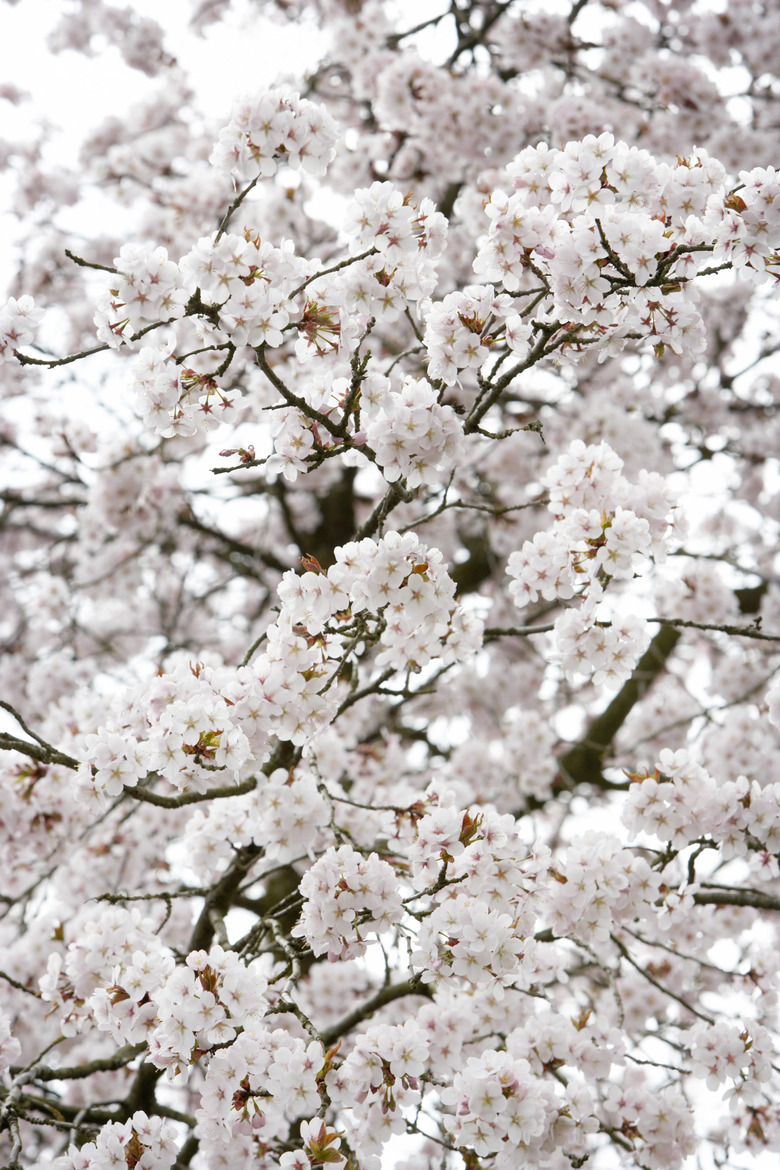The Ten Best Crape Myrtle Varieties
Two types of crape myrtles are grown in the United States: the common crape myrtle, or Lagerstroemia indica, and the Japanese crape myrtle, or Lagerstroemia faurei. The common crepe myrtle is hardy in U.S. Department of Agriculture plant hardiness zones 7 to 9, while the Japanese crape myrtle is more cold-hardy, growing in zone 6 as well. Among these two types of crape myrtles, there are many varieties that offer different sizes and bloom colors.
Dwarf Varieties
Most dwarf varieties of crape myrtles are compact flowering shrubs that grow in a mound shape. The Chickasaw variety of crape myrtle grows up to 3 feet and is perfect for container gardens because of its small size. Chickasaw grows small, lavender-pink flowers, has silvery bark and bronze-red fall coloring. Firecracker dwarf crape myrtle grows slightly larger, at 3 to 5 feet in height, and produces light red flowers in July and has red-orange coloring in fall.
Semi-Dwarf Varieties
Semi-dwarf crape myrtles are large shrubs that generally grow between 5 and 10 feet tall, and they may be more compact growers than tree varieties. The Caddo variety is more of a spreading shrub with cinnamon-colored bark that grows bright pink flowers in summer and has orange-red fall foliage. The Zuni is a dense shrub that grows in a round shape and produces medium to dark lavender flowers. Zuni crape myrtles have tan and white bark as well as brilliant red-orange fall color.
Small Trees
In general, small crape myrtle trees grow between 10 and 15 feet tall. A hardy, disease-resistant small tree variety of crape myrtle is the Commanche, which produces coral pink flowers and has light brown bark. One of the first varieties of crape myrtle to be introduced was the William Toovey, or Rubra Nana, and is still common today. This small crape myrtle tree has light brown and silver bark, produces bright pink flowers in mid-summer and has good resistance to powdery mildew, a common crape myrtle disease.
Medium Trees
Medium crape myrtle varieties generally grow between 15 and 20 feet tall, though some will top 20 feet. The Dynamite is a medium tree that grows true red flowers in early July and bright orange foliage in the fall. The Alabama White, also known as Byer's White or Clear White, is a medium crape myrtle tree that has bright white flowers in large, dense clusters as well as silvery tan bark.
Large Trees
The large tree varieties of crape myrtle grow up to 30 feet tall, though their growth habit can vary from spreading to vase-like. The Biloxi is a common crape myrtle tree that grows in a vase-like habit, with many trunks growing up from a central root ball. The Biloxi has tan and chestnut bark as well as bright pink flowers. The Natchez is a tall, arching hybrid tree that has tan and cinnamon-colored bark. Natchez crape myrtles produce large white flower clusters in mid-June and bloom for more than 100 days.
